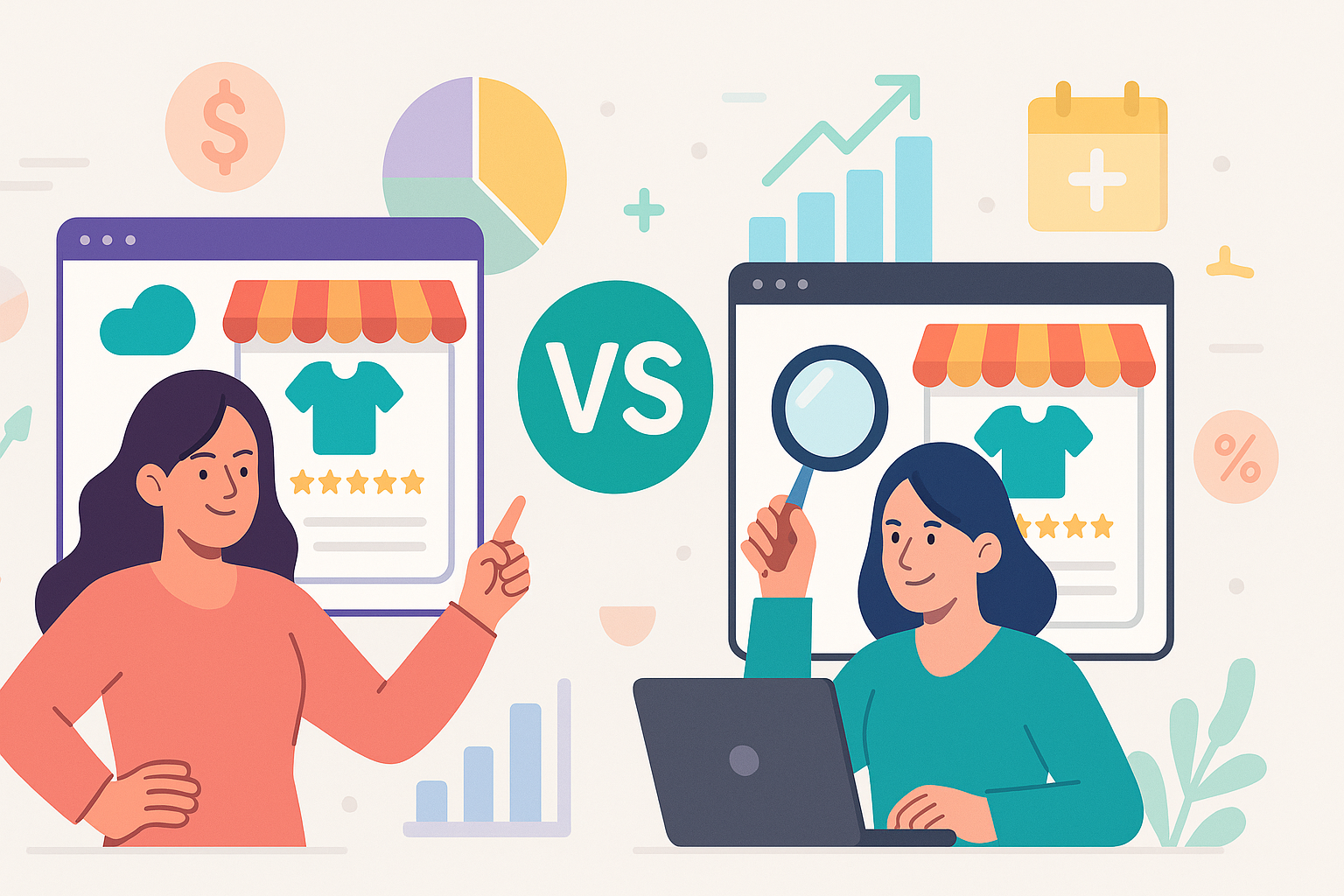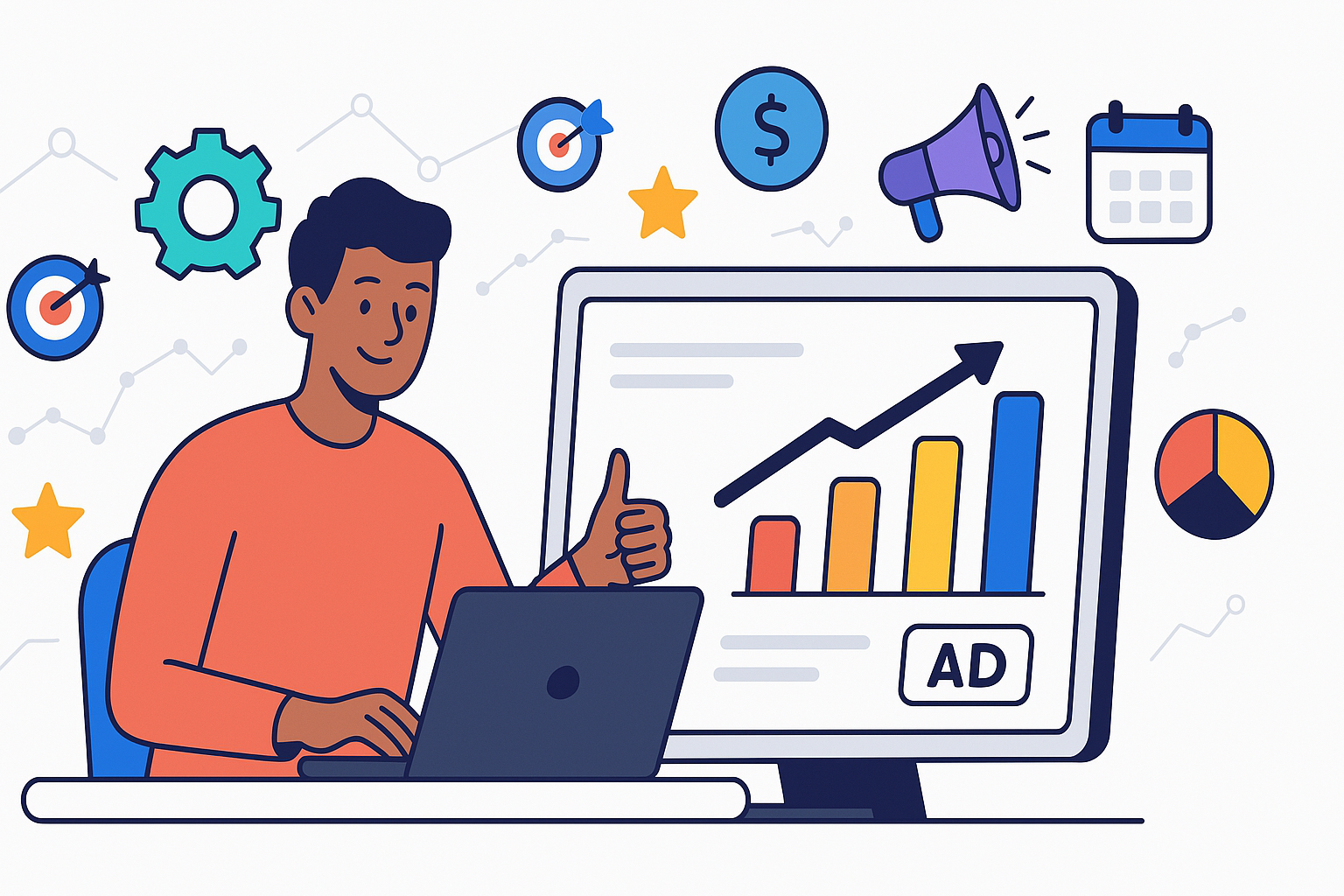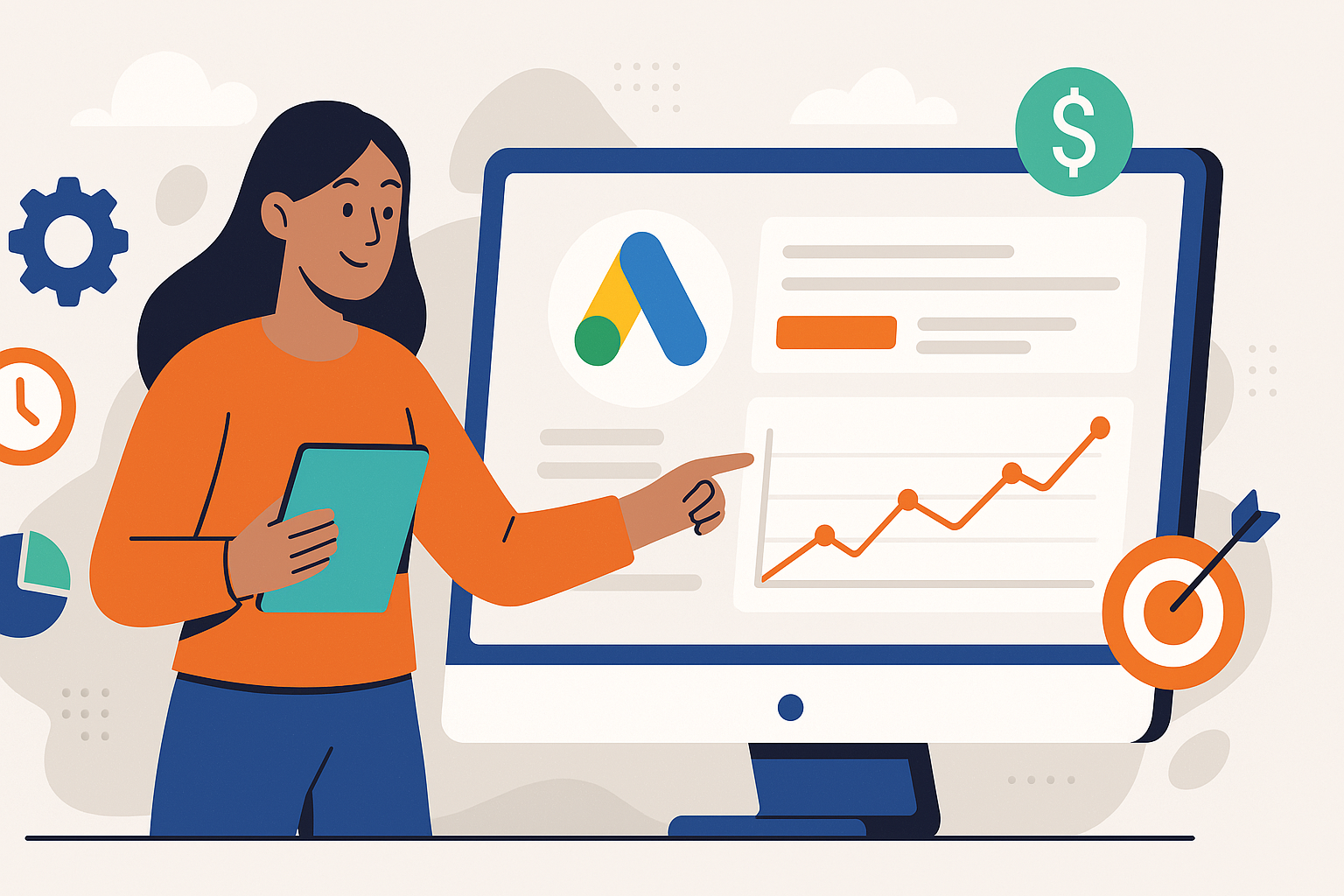What is PPC? The Ultimate Guide to Pay-Per-Click Advertising
by Francisco Kraefft on 4 Feb, 2025
In the digital marketplace, visibility is currency. You have valuable products or services, but how do you ensure potential customers find you amidst the online noise? Enter Pay-Per-Click (PPC) advertising. You've likely encountered these ads—they appear at the top of search results, along your social media feeds, and across various websites. But what is PPC fundamentally? It's more than just placing ads; it's a strategic, data-driven approach to connect with your target audience precisely when they're looking for solutions you offer. Understanding PPC is crucial for any business aiming for rapid, measurable growth online. This guide will demystify PPC, exploring its mechanics, benefits, strategic implementation, and the path to maximizing your return on investment.
Defining PPC: Understanding the Core Mechanics
So, what is PPC? At its heart, Pay-Per-Click is an online advertising model where advertisers pay a fee each time one of their ads is clicked. Essentially, you're buying visits to your site, rather than attempting to 'earn' those visits organically.
One of the most common forms of PPC is search engine advertising. When someone searches for a keyword related to your business offering on search engines like Google or Bing, your ad can appear prominently among the search results. Here's a breakdown of how it typically works:
- Keywords: You select keywords relevant to your products or services – terms you believe potential customers will search for.
- Bidding: You bid on these keywords, indicating the maximum amount you're willing to pay for a single click on your ad associated with that keyword (Max CPC).
- Ad Auction: When a user searches for one of your keywords, an automated ad auction takes place almost instantaneously. This auction determines which ads are shown and in what order. It considers not just your bid amount (Max CPC) but also the Quality Score of your ad.
- Quality Score: This is a crucial metric used by search engines (like Google Ads) to estimate the quality and relevance of your keywords, ads, and landing pages. Higher Quality Scores can lead to lower prices per click and better ad positions.
- Click & Cost: If a user finds your ad relevant and clicks on it, you pay an amount typically at or below your maximum bid. If your ad is shown but not clicked (an impression), you usually don't pay anything in a standard PPC model.
Key PPC Terminology You Should Know:
- CPC (Cost Per Click): The actual amount you pay each time someone clicks on your ad.
- Impression: Each time your ad is displayed on a results page or other site, it counts as one impression.
- CTR (Click-Through Rate): The percentage of impressions that result in a click (Clicks ÷ Impressions = CTR). A higher CTR often indicates that your ads are relevant and compelling to users.
- Conversion: When a user takes a desired action after clicking your ad, such as making a purchase, filling out a form, or calling your business. Tracking conversions is vital for measuring PPC success.
- Landing Page: The specific web page a user arrives at after clicking your PPC ad. Optimizing this page is critical for achieving conversions.
Understanding these fundamentals is the first step. PPC isn't just about spending money on clicks; it's about strategically investing in targeted traffic that has a high potential to convert into valuable customers.
Why PPC Matters: Driving Growth and Achieving Business Goals
Now that we've covered the basics of what is PPC, let's explore why it's such a powerful tool for businesses of all sizes. While organic strategies like SEO are essential for long-term authority, PPC offers distinct advantages, particularly for achieving specific, immediate goals.
Here's why incorporating PPC into your digital marketing mix is often a game-changer:
- Rapid Results: Unlike SEO, which can take months to yield significant results, PPC campaigns can start driving traffic almost immediately after launch. Need to promote a new product or a limited-time offer now? PPC delivers.
- Highly Targeted Reach: PPC platforms offer sophisticated targeting options. You can target users based on:
- Keywords: Reaching people actively searching for what you offer.
- Demographics: Age, gender, location, parental status, income level.
- Interests & Behaviors: Targeting based on online activity, affinities, and purchase intent.
- Remarketing: Re-engaging users who have previously visited your website. This precision ensures your ad spend is focused on audiences most likely to convert.
- Measurable & Trackable ROI: This is where data-driven agencies like iVirtual shine. Every aspect of a PPC campaign can be tracked, measured, and analyzed. You know exactly how much you're spending, how many clicks and conversions you're getting, and what your Return on Investment (ROI) or Return on Ad Spend (ROAS) is. This allows for informed decisions and continuous optimization.
- Increased Brand Visibility: Even if users don't click immediately, seeing your brand name appear consistently for relevant searches builds awareness and recognition. PPC complements organic efforts by ensuring you capture attention at the top of the search results page.
- Budget Control & Flexibility: You set your own budget. Whether it's a few dollars a day or thousands, you decide how much you're willing to spend. You can easily scale budgets up or down based on performance, seasonality, or specific campaign goals. There are no long-term contracts dictating your spend.
- Competitive Advantage: Your competitors are likely using PPC. Having a presence in the paid search results ensures you're not losing potential customers to them. Well-managed PPC can even help you outperform larger competitors by targeting niche segments effectively.
Ultimately, PPC helps you achieve core business objectives: generating qualified leads, increasing online sales, promoting brand awareness, and driving targeted website traffic. It provides a level of control, speed, and measurability that is hard to match with other marketing channels.
Exploring the Diverse Landscape of PPC Campaign Types
PPC isn't a monolithic entity; it encompasses a variety of campaign types, each suited for different goals and platforms. Understanding these variations allows you to strategically allocate your budget and tailor your approach.
Here are some of the most common types of PPC campaigns:
-
- What they are: These are the text-based ads you see at the top and bottom of Search Engine Results Pages (SERPs) on platforms like Google and Bing.
- How they work: Triggered by specific keyword searches users perform.
- Best for: Capturing high-intent users actively looking for specific products, services, or information. Excellent for lead generation and direct sales.
-
Display Ads:
- What they are: Visual ads (images, banners, videos) that appear on websites within a display network (like the Google Display Network, which includes millions of websites, apps, and videos).
- How they work: Can be targeted based on keywords, demographics, interests, topics, or placements (specific websites).
- Best for: Building brand awareness, reaching broader audiences, and remarketing efforts. Less focused on immediate conversion compared to search ads, but powerful for visibility.
-
Social Media Ads:
- What they are: Ads displayed on social media platforms like Facebook, Instagram, LinkedIn, Twitter, TikTok, Pinterest, etc.
- How they work: Leverage the vast user data held by these platforms for incredibly granular targeting based on demographics, interests, behaviors, connections, job titles (especially LinkedIn), and more. Often uses a PPC model but can also use CPM (Cost Per Mille/Thousand Impressions).
- Best for: Brand building, community engagement, targeted lead generation (especially B2B on LinkedIn), driving traffic, and promoting specific content or offers to highly specific audience segments.
-
Remarketing/Retargeting Ads:
- What they are: Ads specifically shown to users who have previously interacted with your website or app.
- How they work: Uses tracking pixels (cookies) to identify past visitors and show them tailored ads as they browse other sites (Display Remarketing) or search again (Search Remarketing - RLSA).
- Best for: Re-engaging interested prospects, recovering abandoned carts, promoting related products, and staying top-of-mind. Conversion rates are often higher for remarketing campaigns.
-
Shopping Ads (Product Listing Ads - PLAs):
- What they are: Product-focused ads usually displayed at the top or side of search results, featuring an image, title, price, and store name.
- How they work: Triggered by product-related searches. Advertisers provide a product feed to platforms like Google Merchant Center.
- Best for: E-commerce businesses looking to drive direct product sales. Highly visual and provide key information upfront.
Choosing the right mix of PPC campaign types depends on your specific business goals, target audience, and budget. Often, a multi-channel approach yields the best overall results, leveraging the strengths of each platform.
Crafting a Winning PPC Strategy: Key Elements for Success
Simply understanding what is PPC and its types isn't enough; success hinges on a well-defined strategy. Running PPC campaigns without a clear plan is like navigating without a map – you might move, but likely not towards your desired destination. A robust strategy ensures your ad spend is efficient and drives meaningful results.
Here are the essential components of building a winning PPC strategy:
-
Define Clear Objectives: What do you want to achieve? Be specific. Examples include:
- Increase online sales by 15% within Q3.
- Generate 50 qualified leads per month for the sales team.
- Drive 10,000 targeted visitors to a new landing page.
- Increase brand awareness within a specific geographic region. Your objectives will guide keyword selection, ad copy, landing page design, and metric tracking.
-
Thorough Keyword Research: This is the foundation of search advertising. Identify the terms your potential customers are actually using. Consider:
- Relevance: How closely do the keywords match your offering?
- Search Volume: How many people are searching for these terms?
- Competition: How many other advertisers are bidding on these terms?
- Intent: What is the user trying to achieve with this search (informational, navigational, transactional)? Use tools like Google Keyword Planner, SEMrush, or Ahrefs. Don't forget negative keywords – terms you want to exclude to avoid irrelevant clicks.
-
Compelling Ad Copy Creation: Your ad is your first impression. It needs to grab attention, highlight benefits, include relevant keywords, and have a clear Call to Action (CTA).
- Focus on user benefits, not just features.
- Use strong verbs.
- Include numbers or statistics where possible.
- Align ad copy with the specific keywords in each ad group.
- Test different headlines and descriptions (A/B testing).
-
Landing Page Optimization (LPO): Where does the user go after clicking? The landing page experience is critical for conversions. Ensure:
- Relevance: The landing page content directly matches the ad copy and keyword intent.
- Clear Value Proposition: What's in it for the user?
- Strong CTA: Tell the user exactly what to do next.
- User-Friendly Design: Easy navigation, fast loading speed, mobile-friendliness.
- Minimal Distractions: Keep the focus on the conversion goal.
-
Logical Campaign Structure & Ad Groups: Organize your campaigns and ad groups effectively. Group closely related keywords together into specific ad groups, allowing you to write highly relevant ad copy for each group. A well-structured account makes management, reporting, and optimization much easier.
-
Strategic Bidding & Budget Allocation: Decide on your bidding strategy (e.g., maximize clicks, maximize conversions, target CPA, target ROAS) based on your goals. Allocate your budget across different campaigns and ad groups based on performance potential and strategic importance.
Building and executing this strategy requires expertise and ongoing effort. This data-driven approach is precisely what we focus on at iVirtual, ensuring every element works together to achieve your business goals.
Measuring PPC Success: Metrics, Optimization, and Continuous Improvement
Launching a PPC campaign is just the beginning. The true power of PPC lies in its measurability and the potential for continuous optimization based on real-time data. If you're not tracking performance and making adjustments, you're leaving money on the table. Understanding what is PPC performance involves diving into the data.
Key Metrics to Track:
While clicks and CTR are important initial indicators, focus on metrics that directly impact your bottom line:
- Conversion Rate: The percentage of clicks that result in a desired action (e.g., purchase, form submission). (Conversions ÷ Clicks = Conversion Rate). This tells you how effective your ads and landing pages are at achieving your goals.
- Cost Per Acquisition (CPA) / Cost Per Conversion: How much you spend, on average, to acquire one lead or customer through PPC. (Total Cost ÷ Total Conversions = CPA). Knowing your target CPA is crucial for profitability.
- Return on Ad Spend (ROAS): Measures the gross revenue generated for every dollar spent on advertising. (Total Conversion Value ÷ Total Cost = ROAS). This is a primary indicator of campaign profitability.
- Quality Score (Search Ads): As mentioned earlier, this impacts your ad rank and CPC. Monitor trends and work to improve relevance of keywords, ads, and landing pages.
- Impression Share: The percentage of potential impressions your ads actually received. Helps identify if budget or rank is limiting visibility.
Optimization: The Path to Better Results
Data analysis drives optimization. Based on the metrics you track, you can make informed decisions to improve performance:
- A/B Testing (Split Testing): Continuously test different elements of your campaigns:
- Ad Copy (headlines, descriptions, CTAs)
- Landing Pages (layouts, headlines, forms, offers)
- Bidding Strategies
- Targeting Options Small changes can lead to significant improvements in performance.
- Keyword Refinement: Pause underperforming keywords, adjust bids on profitable ones, discover new opportunities, and consistently add relevant negative keywords to filter out irrelevant traffic.
- Bid Adjustments: Increase bids for high-performing segments (e.g., specific times of day, locations, devices) and decrease bids for underperforming ones.
- Landing Page Improvements: Use heatmaps, session recordings, and analytics to understand user behavior on your landing pages and identify areas for improvement.
- Budget Reallocation: Shift budget towards the campaigns, ad groups, and keywords that deliver the best ROI or CPA.
The Importance of Reporting & Iteration
Regular reporting is essential to understand trends and communicate performance. Don't just look at data in isolation; analyze trends over time. PPC is not a 'set it and forget it' channel. It requires ongoing monitoring, analysis, and iterative optimization to adapt to changing market conditions, competitor actions, and evolving user behavior. This commitment to data-driven refinement is fundamental to maximizing the value you get from your PPC investment. At iVirtual, we embed this continuous improvement cycle into every campaign we manage, ensuring your advertising budget works harder for you.
Conclusion
Pay-Per-Click advertising is a dynamic and potent component of a comprehensive digital marketing strategy. By understanding what is PPC, its various forms, and the strategic elements involved, you can harness its power to drive immediate, targeted traffic and achieve measurable business outcomes. From defining goals and researching keywords to crafting compelling ads, optimizing landing pages, and relentlessly analyzing performance data, successful PPC requires diligence and expertise. When managed effectively, PPC offers unparalleled control, speed, and accountability, enabling you to connect with your ideal customers at the precise moment they need you.
Ready to unlock the full potential of PPC for your business? Let our data-driven experts craft and manage campaigns that deliver results. Contact us today for a personalized consultation!


